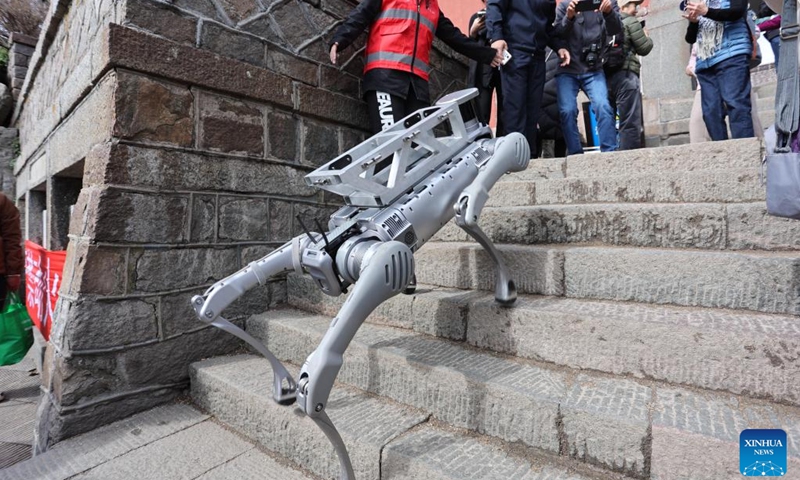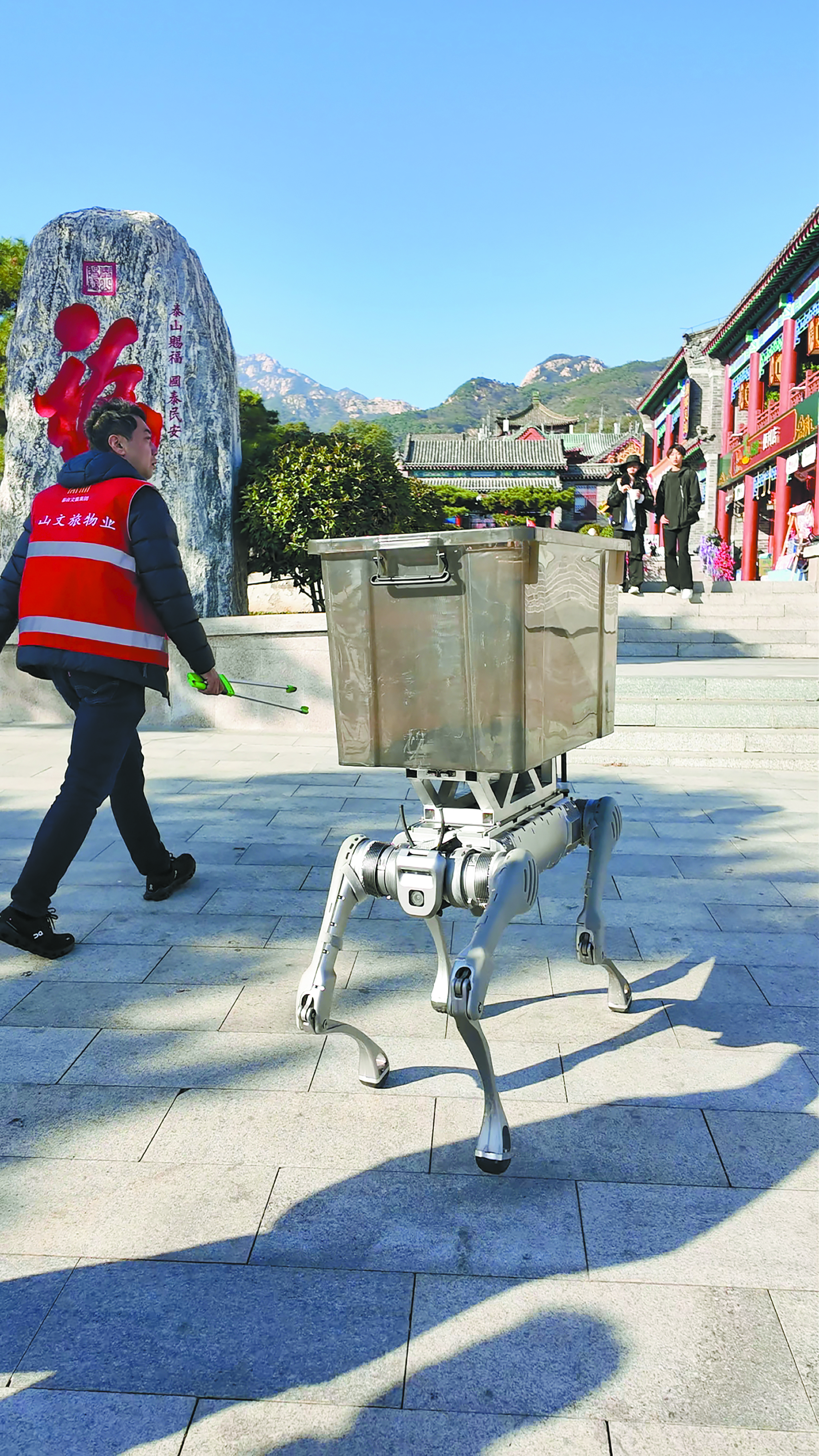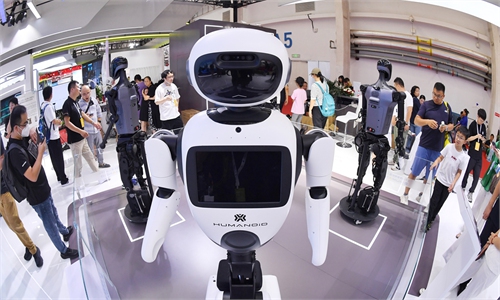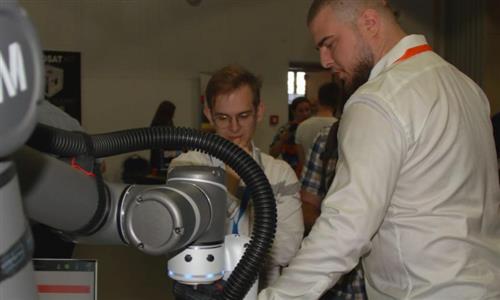Robotic dogs become porters on Mount Tai with new tech products serving as right arm in daily work
Intelligent robots more common, supporting people’s daily life and work

A robotic dog that would be deployed to deliver heavy loads including garbage is in a test run at the Mount Tai scenic area in Tai'an, east China's Shandong Province, Oct. 21, 2024. (Photo: Xinhua)
Mount Tai is becoming more and more tech-savvy!" "Technology changes life." "Can I ride it up the mountain?" In October, some unique figures appeared on the winding paths of Mount Tai - a group of robotic dogs carrying garbage, sparking interest among netizens.
These robotic dogs, despite their slender limbs, can carry nearly 50 kilograms while continuously walking, and they were undergoing climbing tests on Mount Tai for garbage removal in East China's Shandong Province.
Regarded as the foremost one of the Five Great Mountains of China, Mount Tai is of both historical and cultural significance. However, due to its steep terrain and narrow, winding roads, large-scale mechanized cleaning operations have long been unfeasible on Mount Tai. For years, human porters have had to carry trash up and down the mountain on foot. The tests were aimed to evaluate the capabilities of the robotic dogs to see if they could be used to address the challenge of garbage collection on Mount Tai in the future.
The potential introduction of robotic dogs on Mount Tai reflected the rapid development of the robotic industry in China. Intelligent robots are becoming more common, serving as a right arm to facilitate daily life and work.
Tech caravan
In 2023, visitor trips to Mount Tai reached a record 8.62 million, with the annual garbage reaching 24,000 tons. This has significantly increased the difficulty and cost of garbage collection and transportation, according to the China Media Group.
Robotic dogs, with their excellent endurance and load capacity, can assist with trash cleanup more efficiently. During the climb, the robotic dogs showed impressive balance and adaptability on steep stone steps. Equipped with an in-depth camera that monitors the environment in real time, they can automatically adjust pace and direction to ensure each step is safe and steady, Unitree Robotics, a domestic technology company that developed these industrial-grade quadruped machines, told the Global Times on Monday.
In the task of transporting garbage on Mount Tai, the robotic dogs also showcased the load-carrying capacity, which can reach up to 50 kilograms, with a battery life lasting 4-6 hours, the company said.
The use of technological innovation has both enhanced the tourism experience and increased visitor interaction. This not only promotes the high-quality development of the cultural and tourism industry but also has a positive impact on environmental protection, the company noted.
As the technological caravan caught eyes, many netizens are also discussing the future of manual labor if it is replaced by robotic dogs. The Global Times learned that the porters on Mount Tai are aging, and it's becoming increasingly difficult to find manual labor for carrying loads. From a long-term perspective, it is necessary to supplement human labor with machines.
However, robotic dogs can only replace a part of human labor. The Global Times learned that in addition to garbage collection, sanitation workers also handle tasks like path cleaning and garbage loading. In the future, if robotic dogs are put into use, they can complement human garbage collection efforts. After they achieve the function of garbage transportation, the scenic area will also consider testing robotic dogs for cargo transportation.
Thriving development
"The appearance of the robotic dogs on Mount Tai is undoubtedly a unique blend of technology and tradition, fully showcasing the achievements of China's robotics industry development," Wang Peng, an associate research fellow at the Beijing Academy of Social Sciences, told the Global Times on Monday.
In addition to fields such as industrial manufacturing and medical services, the robotic companies have engaged in other sectors including environmental protection and education, highlighting the broad applications of robotics in society, Wang noted.
The robotic industry is becoming an important engine for driving new quality productive forces. Data indicates that China is the world's largest producer of robots. In 2023, China produced 7.833 million service robots - marking a 21.3 percent increase from the previous year. In the same year, industrial robot output in China reached 430,000 sets, nearly 73 percent of the global total, according to the Xinhua News Agency.
The development of more advanced humanoid robots is also accelerating. According to a report released at the First Chinese Humanoid Robot Industry Conference in April, China's humanoid robot market is projected to reach 75 billion yuan ($10.5 billion) by 2029, accounting for 32.7 percent of the global total.
"The development of robotics technology relies heavily on talent development. It is necessary to strengthen the training of talent in the field of robotics, to help them meet new job demands," Wang noted.
Moreover, the country should prioritize core technology development, especially achieving breakthroughs in key components such as sensors, actuators, and control systems, to boost the international competitiveness of China's robotics sector, Wang said.

A robotic dog on Mount Tai Photo: Courtesy of Unitree Robotics



